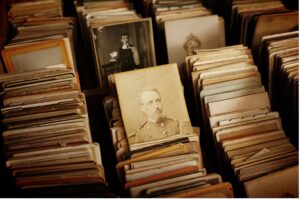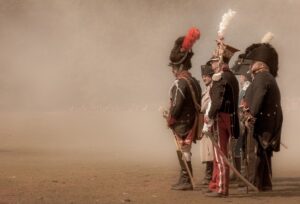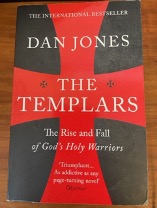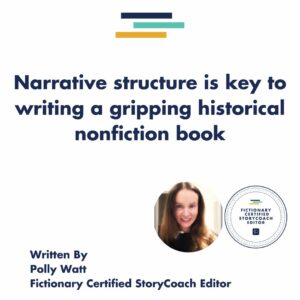What is Historical Nonfiction?
Historical nonfiction discusses real-life historical events and eras. These books should be based upon rigorous research and study.
Subcategories include:
Academic History books/textbooks
These books aim to educate and inform, rather than entertain. Research sources should include:
- Primary Sources: first-hand reports of the events provided by people who had direct experience of them: diaries, letters, court testimonies, etc.,
- Secondary Sources: second-hand accounts given by people who did not experience the event themselves
- Tertiary Sources: reference materials and textbooks which show how later generations have interpreted historical events.
These kinds of historical nonfiction books should be written in a scholarly manner, with copious referencing.
The author-historian often analyses their research critically, forming theories and propositions based on their findings – but every argument should be thoroughly evidenced within their text.
In theory, there should be no bias in the author’s selection of sources and their findings. In reality, of course, few people living can be said to be free of bias – but the intention should be objective analysis.
Example: The Age of Revolution: 1789-1848 by Eric Hobsbawm

Narrative Historical Nonfiction
These books are written to educate and entertain the reader. They should also be based upon extensive historical research. Unlike an academic work, narrative historical nonfiction is structured to present the historical material in the manner most gripping and interesting for readers.
The author may argue their own views and analysis within the text, and may structure their narrative in a manner which supports their argument.
As above, the author should be without bias in their selection of materials, and should be scrupulously dedicated to uncovering the truth of the past. However, as long as the author highlights when their knowledge is limited and their findings subject to interpretation, readers may be more forgiving of writers employing artistic license in the text’s structuring and narrative only, to ensure an enjoyable read.
Example: Half American: The Epic Story of African Americans Fighting World War II at Home and Abroad by Matthew F Delmont.
These definitions aren’t clear-cut; many books blur the boundaries.
Example: The Silk Roads: A New History of the World by Peter Frankopan, as a highly readable text on World History by a well-respected academic, could arguably be defined either as an academic text or as a narrative historical nonfiction book.
Historical Nonfiction Novels
Historical nonfiction novels form a sub-genre of narrative historical nonfiction. Here, readability and pacing is key.
However, the historian’s voice here often takes a backseat, so the book feels like a novel, even though its content should be based on meticulous research rather than imagination.
To recreate a novel’s feel, the author may include scenes in which historical characters engage in dialogue, thought and action, providing detailed setting descriptions. All this requires the author to imagine how the scenes might have played out. Nevertheless, authors should aim to recreate the scenes as accurately as possible through extensive primary and secondary research.
Example: First Light by Walt Larrimore.

Other categories of historical nonfiction exist, including:
- Children’s History books (e.g. the ‘Horrible Histories’ series)
- Historical graphic novels (e.g. March by John Lewis, Andrew Aydin and Nate Powell)
- Biographies/Autobiographies/Memoirs (for more details, see Can a Novel be Nonfiction?)
Tips for Writing Historical Nonfiction
I won’t discuss academic textbooks, autobiographies and biographies here – these are outside my expertise as a Story Editor. When writing Narrative Historical Nonfiction, using the story elements will prove invaluable.
If you’re writing historical nonfiction novels or memoir, apply these elements much as you would in a fictional novel, whilst ensuring you respect historical accuracy.
For narrative historical nonfiction, you might not write fully fledged scenes, but you will find narrative devices help create a compelling read. Where possible, use:
- A tight narrative structure,
- Scene entry and exit hooks,
- Setting descriptions, including the five senses,
- Conflict and tension,
- And avoid digressing from your blurb.
Example: Let’s examine how one successful narrative historical nonfiction book employs narrative structure.
Dan Jones’s The Templars: The Rise and Fall of God’s Holy Warriors was an international bestseller. The Observer found it, “As addictive as any page-turning novel.” It brims with hooks, setting descriptions, conflict and tension.

I examined its Introduction for a skeleton blurb. I found two:
- The Templars, our group protagonists, must protect pilgrims, or else Christians visiting the Holy Lands will be killed by infidels.
- Dan Jones, our historian-protagonist, must “Tell the story of the Templars as they were,” or else their “extraordinary” real deeds will be lost within the “half-truths and voodoo histories that have swirled around them since they fell” – and with that, the real political lessons of their story.
This book follows an exceptionally tight narrative structure:
Inciting Incident – 12%: A Templar Code of Conduct is drafted under a Papal Legate’s authority. The Templars’ founder accepts the task of, “Making the Temple famous.”
- The Templars accept their story goal of protecting Holy Land pilgrims
- Dan Jones accepts his story goal of looking beyond the Templar mythology and fame to uncover the truth.
Plot Point 1 – 25 %: The Second Crusade fails; the Templars come under suspicion because they’ve now become, “Almost synonymous” with the Holy Lands – which is, ‘Both their highest honour and their greatest curse.’
- Fully committed to the Holy Lands, the Templars’ reputation cannot be extricated from the crusades.
- Dan Jones commits to uncovering the truths beneath the Templars’ legendary reputations.
Midpoint – 50 %: Richard the Lionheart arrives in Acre with his crusading force. He orders his Advisor to take the Templar vow; his Advisor is sworn in as the Templar’s Master.
- The Templar’s religious-military order has now merged with political leadership, changing their nature and increasing the risks to the Order’s survival.
- With the Templar’s reputation inextricably enshrined with Richard the Lionheart’s crusades, the mythology surrounding the Order grows; the truth becomes harder for the Historian to find, yet also more important.
Plot Point 2 – 75%: Muslim armies oust the Templars from Safad; the Knights are massacred, their bones and skulls kept for posterity.
- All seems lost for the Templars.
- The Templar’s reputation begins to ebb; their prestige declines. With so many Knights dead, where can our Historian find the truth?
Climax – 90%: Templar enemy King Philip obtains the Papal Bull which destroys the Order.
- The Order is violently destroyed by political leaders and the Inquisition.
- The Historian’s goal succeeds: he’s shown the Order’s extraordinary impact on their world and how this led to their politically-motivated downfall.
Conclusion
Narrative structure is key to writing a gripping historical nonfiction book.
Further Reading
Fiction vs Nonfiction: Definitions and Examples
How to Edit a Narrative Nonfiction Book
Article Written by Polly Watt

A former refugee lawyer in the UK, Polly Watt honed her skills working on cases where careful editing often really was a matter of life and death.
As a Fictionary StoryCoach Editor, she will apply the same care and attention to detail to your structural story edit. She’s passionate about stories and loves working on all different types of literary genres.
Want to tell stories guaranteed to delight readers?
Sign-up for you 7 day free trial of StoryTeller today!



